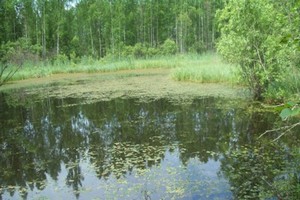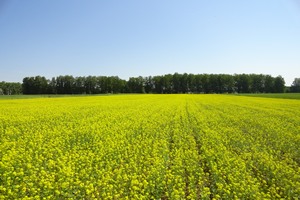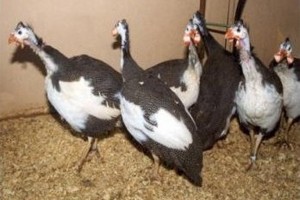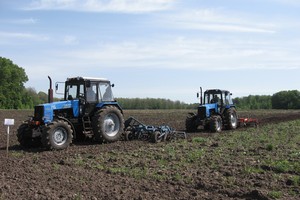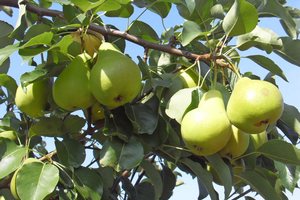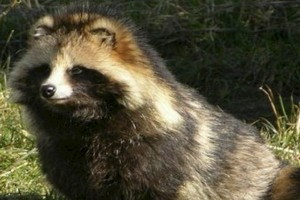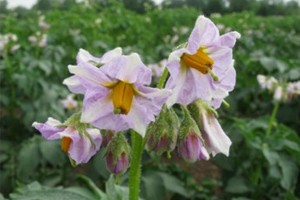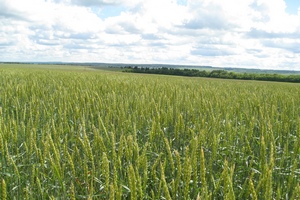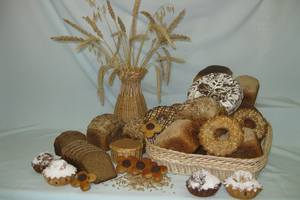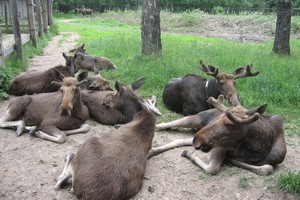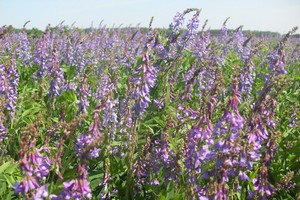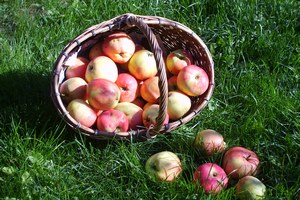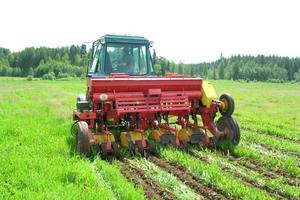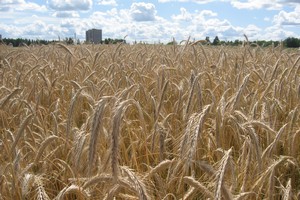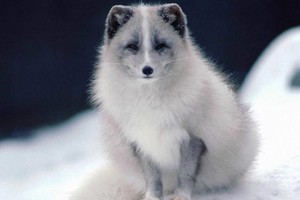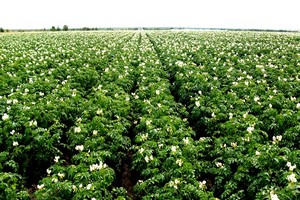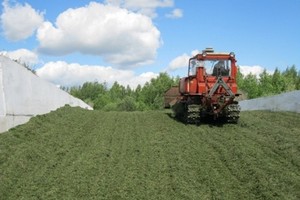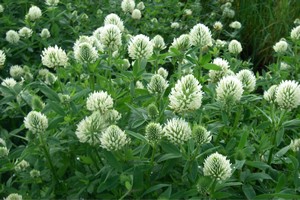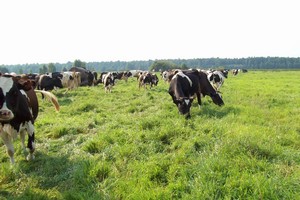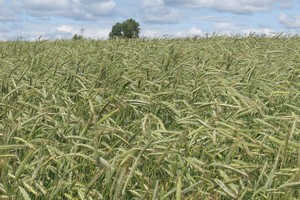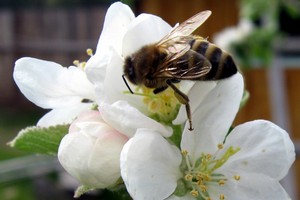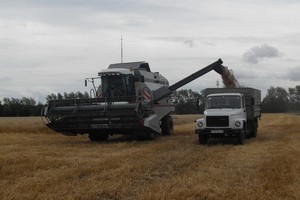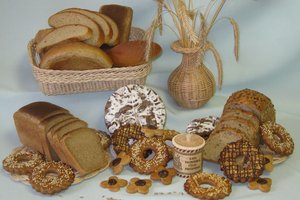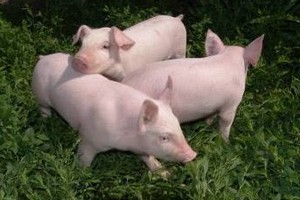Mixed agrophytocenose as a reserve of increase of production of fodder grain and more rational use of the land area
doi: 10.30766/2072-9081.2017.58.3.36-42.
Pages: 36-42.
read allLapshin Yu.A., PhD in Agriculture, Scientific secretary, Leading researcher
Mari Agricultural Research Institute, s. Ruem, Mari El Republic, Russia
E-mail: via@mari-el.ru
The results of studies on the comparative efficiency of cultivation of single-species, binary and polycomponent agrophytocenoses on sod-podzolic soils under the conditions of the Republic of Mari El are reflected. It has been established that the simulated agrophytocenoses with different ratios of peas and barley in terms of productivity of the produced grain mass are superior to single-species crops of gorookh. The most productive (grain yield 4.48 t/ha, including 3.31 t/ha peas, 7.3 t/ha protein harvest) and biologically effective in terms of the ratio of land equivalents (LER = 1.22) was a simulated agrophytocenosis involving peas Bogatyr (85%) and barley Risk (15%). The increase in barley from 15 to 35% (from the sowing of the crop in its pure form) led to a decrease in both the proportion of peas in the grain crop yield and the biological effectiveness of the mixed crop (LER decreased from 1.22 to 1.0). A close relationship (r = - 0.76-0.82) between the cenotic activity of barley and pea in mixed agrophytocenoses was established. When cultivating mixed varietal agrophytocenoses of spring wheat, the architectonics of the structure of the productive stemstalk changed, and the competitive interrelationships among the plants were weakened. On the yield of grain in the years favorable for moistening the soil, the modeled mixed agrophytocenosis [Priokskaya (5) + Krepysh (1)] significantly exceeded the pure-grade crops of Krepysh and Priokskaya. In this agrophytocenosis, the value of LER was higher than 1, but it had a pronounced tendency to decrease from 1.16 on an unfertilized background to 1.12 on the background of N45P45K45, 1.08 for N60P45K45 and 1.06 for N90P45K45. Binary agrophytocenoses of winter crops (triticale and wheat) in comparison with single-species crops were not very effective (LER = 1.00 ... 1.11). In contrast, the cultivation of poly-species winter grain agrophytocenoses with the participation of triticale, wheat and rye indicates a more rational use of environmental resources (LER = 1.15 ... 1.29). Cultivation of simulated mixed agrophytocenoses is an affordable and cheap way of producing high-quality forage grains. Grain productivity of multicomponent agrophytocenosis is determined by a set of constituent crop-components.
Keywords: pea-barley agrophytocenoses, winter cereals agrophytocenoses, mixed varietal agrophytocenoses of spring wheat, grain yield, LER index
References
1. Novoselov S.I. Vliyanie sevooborota i udobreniy na urozhaynost' sel'skokhozyaystvennykh kul'tur. [The effect of crop rotation and fertilizers on the yield of agricultural crops]. Vestnik Mariyskogo gosudarstvennogo universiteta. Seriya «Sel'skokhozyaystvennye nauki. Ekonomicheskie nauki». 2017. no. 1(9). pp. 60-65.
2. Kozlova L.M., Makarova T.S., Popov F.A., Denisova A.V. Sevooborot kak biologicheskiy priem sokhraneniya pochvennogo plodorodiya i povysheniya produktivnosti pashni. [Crop rotation as a biological method of preserving soil fertility and increasing the productivity of arable land]. Dostizheniya nauki i tekhniki APK. 2011. no. 1. pp. 16-18.
3. Izmest'ev V.M., Svechnikov A.K., Soko-lova E.A. Vliyanie mineral'nykh udobreniy na plodorodie dernovo-podzolistykh pochv v kormovykh sevooborotakh. [Influence of mineral fertilizers on the fertility of sodpodzolic soils of fodder crop rotations]. Agrarnaya nauka Evro-Severo-Vostoka. 2016. no 6. pp. 37-40.
4. Kislov A.V., Dolmatov A.P. Sokhranenie i vosstanovlenie pochvennogo plodorodiya v biologicheskom zemledelii pri ekologizatsii sevooborotov na yuzhnom Urale: Materialy mezhdun. nauchno-prakt. konferentsii «Teoreticheskie i tekhnologicheskie osnovy vosproizvodstva plodorodiya pochvy i urozhaynost' sel'skokhozyaystvennykh kul'tur». [Preservation and restoration of soil fertility in biological agriculture with the ecologization of crop rotations in the southern Urals. Scientific-practical Conference "Theoretical and Technological Fundamentals of Soil Fertility Reproduction and Crop Yield"]. Moscow: Izd-vo RGAU-MSKhA, 2012. pp. 300-312.
5. Zhuchenko A.A. Puti innovatsionno-adaptivnogo razvitiya APK Rossii v KhKhI stoletii. [Ways of innovative adaptive development of the agro-industrial complex of Russia in the 21st century]. Kirov: NIISKh Severo-Vostoka, 2011. 144 p.
6. Novikov M.N., Takunov I.P., Slesarevy T.N., Barinov V.N. Smeshannye posevy s lyupinom v zemledelii Nechernozemnoy zony. [Mixed crops with lupine in the agriculture of the Non-chernozem zone]. Moscow: OOO «Stolichnaya tipografiya», 2008. 160 p.
7. Takunov I.P., Slesareva T.N. Bezgerbitsidnaya resursoenergosberegayushchaya tekhnolo-giya vozdelyvaniya lyupina i zlakovykh kul'tur v smeshannykh posevakh. Nauchno-prakticheskie rekomendatsii. [Nonherbicidal resourcesaving technology for cultivation of lupine and cereals in mixed crops. Scientific and practical recommendations]. Bryansk: Izd-vo «Chitaygorod», 2007. 60 p.
8. Azarov V.B. K probleme biologizatsii zemledeliya TsChZ. [To the problem of the biologization of agriculture of the Central Chernozem Region]. Byulleten' VIUA. 2001. no. 115. p.4.
9. Kuptsov N.S., Takunov I.P. Lyupin – genetika, selektsiya, geterogennye posevy. [Lupine - genetics, breeding, heterogeneous crops]. Bryansk, 2006. 576 p.
10. Lapshin Yu.A., Byrkanova S.V. Effektivnost' proizvodstva furazhnogo zerna v odnovidovykh i smeshannykh agrobiotsenozakh. [Efficiency of fodder grain production in one-species and mixed agro-biocenoses]. Agrarnaya nauka Evro-Severo-Vostoka. 2014. no. 2(39) pp. 4-9.
11. Lapshin Yu.A., Izmest'ev V.M. Netraditsionnyy sposob proizvodstva furazhnogo zerna khoroshego kachestva. [Unconventional way of production of fodder grain of good quality]. Zernovoe khozyaystvo Rossii. 2012. no. 4(22). pp. 20-24.
12. Lapshin Yu.A., Byrkanova S.V. Produktivnost' ozimykh zernovykh agrofitotsenozov. [Productivity of winter cereal agrophytocenosis]. Kormoproizvodstvo. 2015. no. 2. pp. 23-29.
13. Metodicheskie ukazaniya po provedeniyu polevykh opytov s kormovymi kul'turami. [Methodological instructions for conducting field experiments with fodder crops]. Moscow, 1997. 155 p.
14. Metodicheskoe rukovodstvo po issledovaniyu smeshannykh agrofitotsenozov. [Methodological guidelines for the study of mixed agrophytocenosis]. Minsk: Navuka i tekhnika, 1996. 101 p.
15. Dospekhov B.A. Metodika polevogo opyta (s osnovami statisticheskoy obrabotki rezul'tatov issledovaniy). [Methods of field experiment (with the basics of statistical processing of research results)]. Moscow: Agopromizdat, 1985. 351 p.
